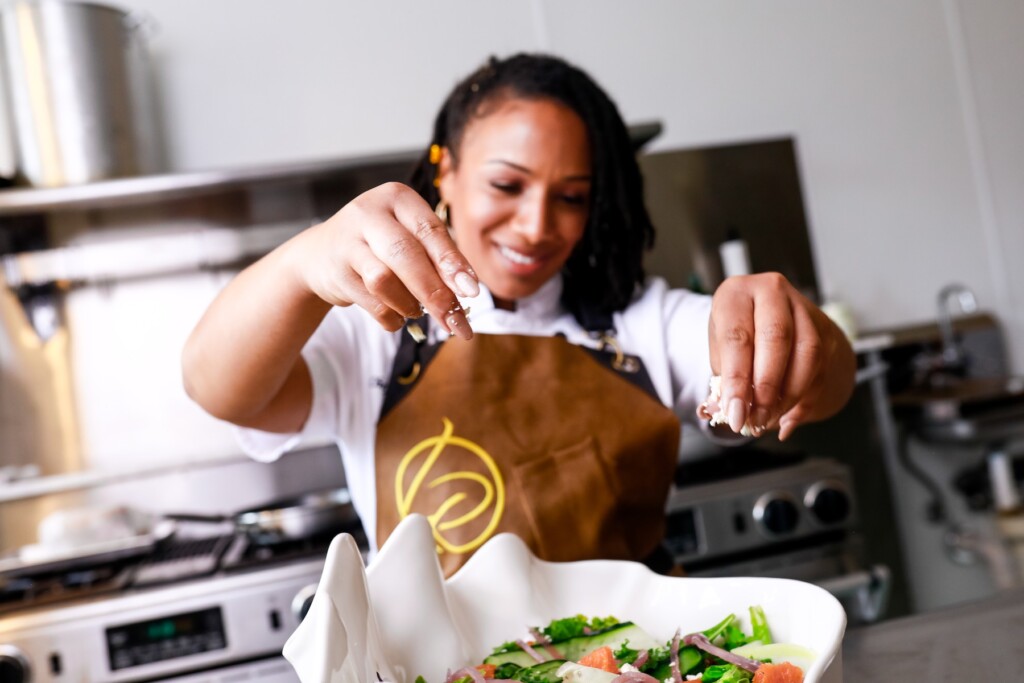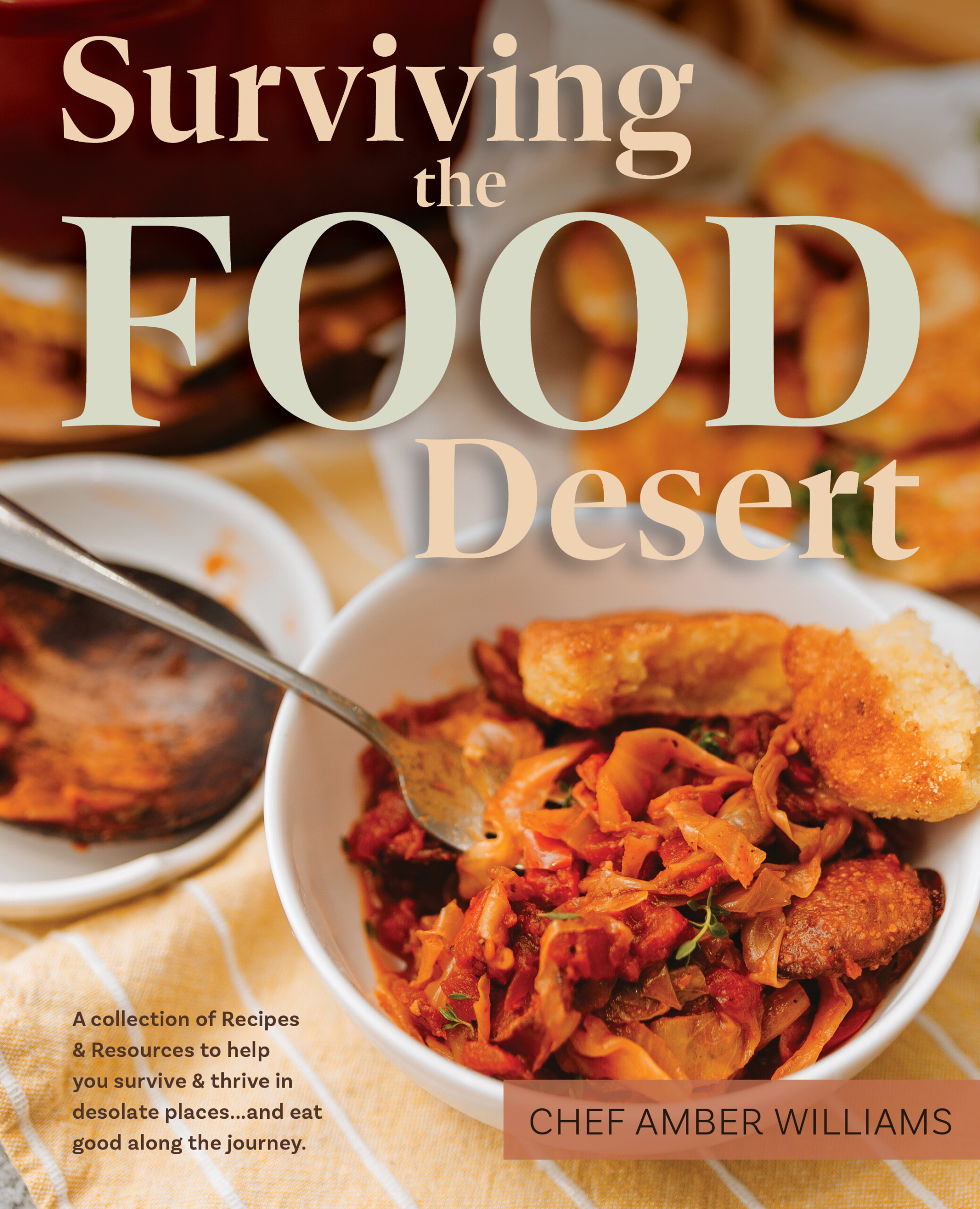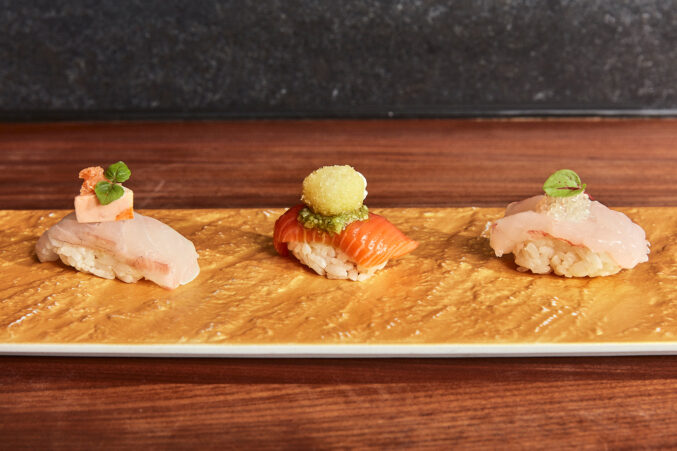During the height of the pandemic, with her catering company having slowed down considerably, chef Amber Williams had to get boxes of food from mobile food distribution sites across Dallas. Pantries and food banks hosted major drives every month, and thousands of people showed up each time to stock their pantries. The boxes often included a mix of shelf-stable items and fresh produce.
It reminded Williams of her childhood. Raised in South Oak Cliff, Williams said her family sometimes lived off food distribution boxes. Portions of South Oak Cliff and parts of South and southern Dallas are federally designated food deserts, or areas without regular access to affordable, fresh food. When her family received food boxes, Williams marveled as her mother, a Baton Rouge native, turned what was inside into glorious meals.
“I grew up in a family of big flavors,” she says. “Even though we may have been in the area [of food deserts], we didn’t feel that. Our mom made sure we didn’t feel that.”
Getting one of those boxes in 2020 pushed Williams to be as creative as her mother. Her catering business had lost 91 percent of its revenue amid social distancing and shutdowns, so she decided to put her energy into creating new recipes from the ingredients inside the boxes.
The self-taught Williams (she jokes that she graduated from “Food Network University”) used lessons from her childhood to write her new cookbook, “Surviving the Food Desert: Cookbook & Food Desert Resource Guide.”
“I had to go back to what I knew,” she says. “The only difference [is] I’m a lot older now and I have a lot more knowledge on the food side. And I had to put myself in the position of the community members around me. Like, what about the single parents? What about the families who have these boxes but don’t have the same creativity I do?”
Major food distributions didn’t stop after the pandemic. The need for delicious, healthy food in communities across Dallas has not gone away. Williams experimented with a variety of food box ingredients and journaled her process, often writing down notes that became motivational blurbs in the cookbook. The book includes 15 recipes using ingredients commonly found in food distribution boxes and gas stations.
Many of the recipes are inspired by her mother’s dishes, such as the stuffed cornbread and the Cajun Cabbage. The Cajun Cabbage is one of Williams’ favorites; she describes it as a comforting Sunday dinner. It uses an entire head of cabbage, bell peppers, onion, and common seasonings such as paprika, salt, pepper, and Italian seasoning. It calls for Andouille sausage, which is optional, Williams says. (She’s vegan, so it tastes just as good without it.)
Another favorite is the Baked Sweet Potato with Apple and Onion Compote, a sweet, savory, and hearty breakfast dish. Some recipes are spurred by Williams’ creativity and cravings, such as the Boxed Cake Cookies.
“I wondered if I could change the texture of the batter and instead of making a cake, make some cookies,” she says. “I played with the ratio on some things. That’s probably one of my favorite recipes. It’s dangerous because they’re so easy to make.”
Williams is aiming for easy recipes inside the pages of “Surviving the Food Desert.” Many use common pantry items and can be switched out for what comes inside a box, if needed. Distribution boxes differ depending on what’s available at the food bank and pantries, but there’s usually a variety of canned goods and shelf-stable items such as beans and pasta.
For those needing extra resources, the cookbook comes with a list of nationwide food pantries, community gardens, and nonprofit organizations that assist people living with food insecurity, like the North Texas Food Bank and Restorative Farms.
Williams says she wants to partner with organizations to distribute the books to residents whose communities are considered food deserts. Later, she wants to educate and teach people who aren’t sure of what to cook with the food they receive. She has some experience in that area, having pivoted to virtual cooking classes during the pandemic as a source of income. Most of all, she hopes her cookbook is part of a solution to an ongoing problem.
“I’ve seen people who didn’t even know what a food desert was,” she says. “There are people who are looking at some of the recipes and thinking, ‘I didn’t know I could do that with that.’ The biggest thing is the organizations that are saying, ‘Wow, we’ve been looking for a resource to fill the gap in our programming, and this is perfect.’”
Surviving the Food Desert is available on Amazon.
Author








